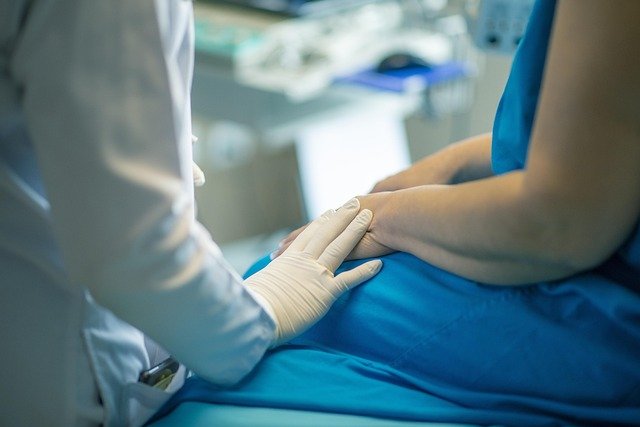Insights on Liposuction Procedure for Body Contouring in Canada
Individuals considering body contouring in Canada may find liposuction to be a significant option. This surgical procedure targets specific areas of unwanted fat, contributing to a more contoured appearance. The effectiveness and recovery times can differ widely based on personal circumstances, making it essential to gather comprehensive information before proceeding.

What is Liposuction and How Does it Work as a Body Contouring Method?
Liposuction is a surgical procedure designed to remove localized fat deposits through small incisions in the skin. The technique involves inserting a thin tube called a cannula connected to a vacuum device that suctions out the fat. The procedure works by targeting subcutaneous fat—the layer that lies just beneath the skin but above the muscle layer.
Several liposuction techniques are available in Canada. Traditional liposuction uses a manual cannula and vacuum system. Power-assisted liposuction (PAL) incorporates a mechanized cannula that moves rapidly back and forth, making fat removal more efficient. Ultrasound-assisted liposuction (UAL) liquefies fat cells using ultrasonic energy before removal, while laser-assisted liposuction (SmartLipo) employs laser energy to melt fat cells.
The most commonly treated areas include the abdomen, flanks, thighs, buttocks, arms, neck, and chin. The procedure is particularly effective for people who maintain a stable weight but have disproportionate fat deposits in specific body areas. Notably, liposuction shapes the body but doesn’t address skin laxity—optimal results typically occur in patients with good skin elasticity who are within 30% of their ideal body weight.
What Are the Key Factors Influencing Effectiveness and Recovery Times?
The effectiveness of liposuction and subsequent recovery time depend on several interconnected factors. Patient selection plays a crucial role—ideal candidates have good skin elasticity, are in good overall health, and have realistic expectations. The amount of fat removed also impacts results and recovery; Canadian guidelines generally recommend removing no more than 5 liters of fat in a single session for safety reasons.
The specific body areas treated affect both outcomes and healing time. Areas with thinner skin like the neck typically show more dramatic improvements but may require more delicate techniques. The surgeon’s expertise and the specific liposuction technique used significantly influence both results and recovery duration.
Recovery timelines vary among patients, but most can expect:
-
1-2 days before returning to light activities
-
1-2 weeks before resuming normal activities
-
4-6 weeks before all swelling subsides
-
3-6 months for final results to become visible
Post-operative care greatly influences recovery speed and final results. Patients must wear compression garments for several weeks, avoid strenuous activities, stay hydrated, and attend all follow-up appointments. Potential complications that may extend recovery include excessive swelling, bruising, infection, contour irregularities, and rarely, more serious issues like pulmonary embolism.
What Are the Alternatives to Surgical Fat Removal Techniques?
For those seeking non-surgical alternatives to liposuction in Canada, several options have emerged in recent years. CoolSculpting (cryolipolysis) freezes fat cells, causing them to crystallize and gradually be eliminated by the body. This FDA-approved treatment typically requires multiple sessions and produces more subtle results than liposuction but involves no downtime.
SculpSure uses laser technology to heat and destroy fat cells, which are then naturally eliminated over several weeks. Ultrasound-based treatments like Ultrashape target and destroy fat cells using focused ultrasonic energy. Injectable options like Kybella specifically target submental fat (double chin) through a series of injections that dissolve fat cells.
Non-invasive body contouring methods generally offer these advantages: minimal to no downtime, lower risk profiles, no anesthesia requirements, and no incisions or scarring. However, they typically deliver more subtle results, require multiple treatment sessions, work best for smaller fat deposits, and cost more over time to achieve comparable results to surgical approaches.
How Much Does Liposuction Cost in Canada?
The cost of liposuction in Canada varies significantly based on several factors. Geographic location plays a substantial role—procedures in major metropolitan areas like Toronto, Vancouver, and Montreal typically command premium prices compared to smaller cities. The specific body areas treated affect pricing, with larger or multiple areas costing more than single, smaller regions.
The technique used also influences cost, with advanced methods like laser-assisted or ultrasound-assisted liposuction generally being more expensive than traditional approaches. Additional expenses include facility fees, anesthesia costs, pre-operative tests, compression garments, and follow-up appointments.
| Body Area | Average Cost Range (CAD) | Typical Recovery Time |
|---|---|---|
| Abdomen | $4,500 - $8,000 | 1-2 weeks |
| Flanks (Love Handles) | $3,500 - $6,000 | 1-2 weeks |
| Thighs | $4,000 - $7,500 | 1-2 weeks |
| Arms | $3,500 - $6,000 | 1 week |
| Neck/Chin | $2,500 - $5,000 | 3-7 days |
| Multiple Areas | $9,000 - $15,000+ | 2-3 weeks |
Prices, rates, or cost estimates mentioned in this article are based on the latest available information but may change over time. Independent research is advised before making financial decisions.
Unlike the United States, Canadian provincial health insurance plans do not cover cosmetic liposuction procedures. However, if the procedure is deemed medically necessary (such as for lipedema treatment), partial coverage may be available. Many cosmetic surgery clinics offer financing options to make payments more manageable, typically spreading costs over 6-24 months.
What Should Canadians Consider Before Opting for Liposuction?
Before proceeding with liposuction in Canada, potential patients should carefully evaluate several important factors. Finding a qualified surgeon is paramount—look for board certification from the Royal College of Physicians and Surgeons of Canada and specific training in cosmetic surgery. Verify the surgeon’s experience specifically with liposuction procedures and examine their before-and-after portfolio.
Setting realistic expectations is essential for satisfaction with results. Liposuction contours the body but does not address obesity, cellulite, or significant skin laxity. Understanding the procedure’s limitations helps avoid disappointment. Health considerations matter greatly—ideal candidates should be within 30% of their ideal weight, have good skin elasticity, be non-smokers, and have no serious health conditions that could complicate surgery or recovery.
The recovery commitment requires planning for downtime, arranging help during initial recovery days, and potentially taking time off work. Long-term lifestyle management remains important, as liposuction results can be undermined by significant weight fluctuations. Finally, Canadians should consider the psychological aspects of body modification, ensuring they’re pursuing the procedure for themselves rather than to please others or achieve unrealistic ideals.
This article is for informational purposes only and should not be considered medical advice. Please consult a qualified healthcare professional for personalized guidance and treatment.




